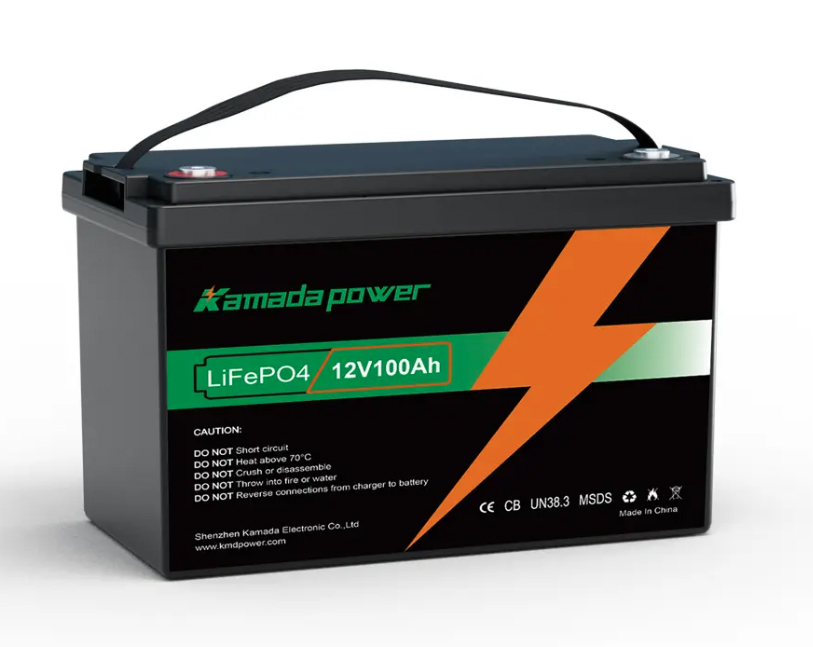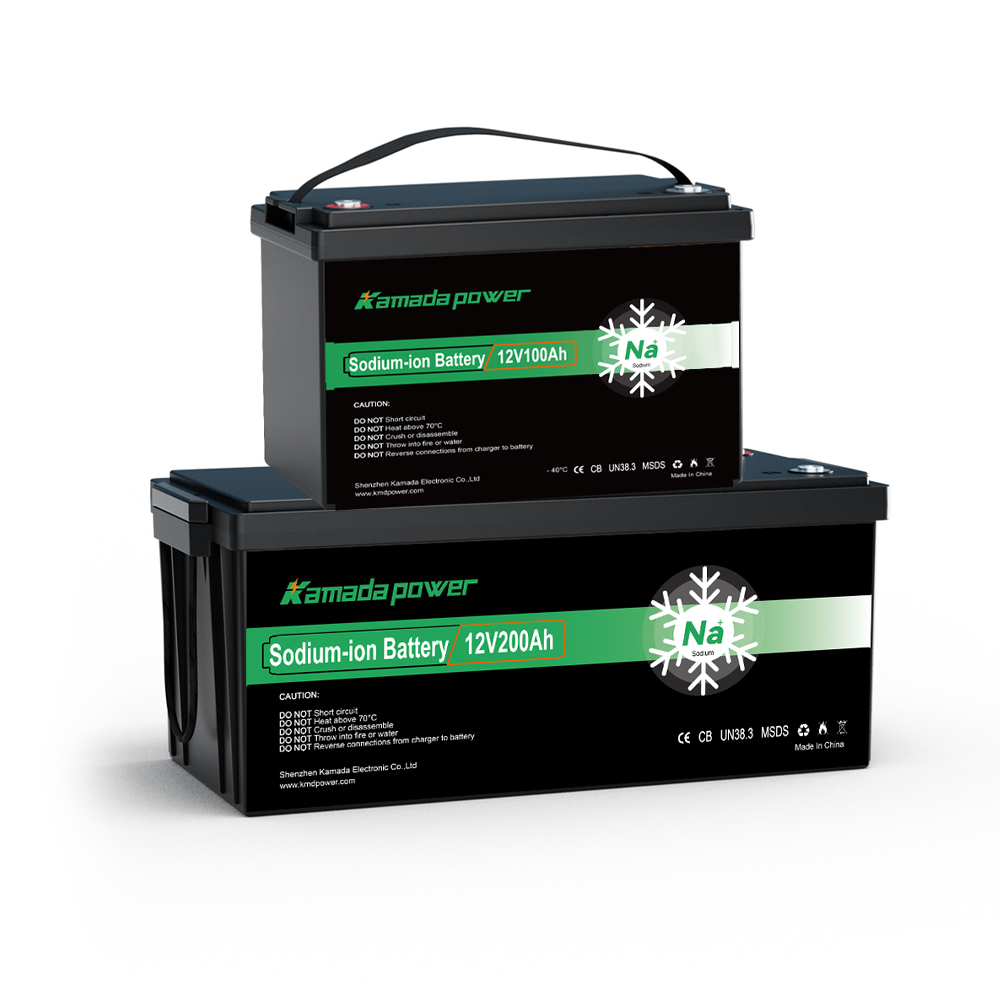How to Store Your Boat Batteries During the Winter. The boating season is ending, which means it’s time for one critical job that can save you a huge headache next spring: storing your marine batteries correctly.
While boat owners know this headache, the problem is far bigger for our industrial clients. The same chemistry that kills a trolling motor battery over winter can cripple a forklift fleet, compromise a ship’s backup power, or ruin a six-figure energy storage system (ESS) during shutdown. We’ve seen countless expensive assets fail from simple storage mistakes. This guide walks you through a process built from that experience to protect your investment.
Follow these steps, and you’re not just doing maintenance. You’re making your assets last, stopping downtime before it starts, and getting the most for your money. We’ll cover everything from storing batteries in-place vs. in a central room, and the different needs of Lead-Acid, AGM, and Lithium-ion.

12v 100ah lifepo4 battery

12v 200ah sodium ion battery
Why You Can’t Just Leave and Forget Your Batteries
Leaving an industrial battery to die over the winter is a guaranteed way to kill it. There are three invisible forces working against you:
- The Science of Self-Discharge: Every battery naturally loses some charge over time. It’s just chemistry. For a standard lead-acid battery, this can be 5-10% a month in a warm space. That slow drain is where the real trouble begins.
- The Enemy: Sulfation (for Lead-Acid/AGM): When a lead-acid battery discharges, lead sulfate crystals form on its plates. That’s normal. But when a battery sits in a discharged state, those crystals grow and harden, blocking the parts that hold a charge. This is sulfation, and it’s what kills most industrial lead-acid batteries. It permanently wrecks their capacity.
- The Killer: Freezing Temperatures: A fully charged battery is mostly acid and won’t freeze easily. A discharged battery is mostly water. In a cold warehouse, that water can freeze, expand, and crack the battery case or buckle the plates inside. That damage is permanent.
The result isn’t just a dead battery. It’s a delayed project, emergency replacement costs, and chaos when you need your equipment ready to work.
The Big Decision: Store In-Situ or in a Centralized Location?
The first question is always where to store them. Do you leave batteries in the equipment or move them to a battery room? Each method has its pros and cons.
| Feature | Centralized Storage (Recommended Method) | In-Situ Storage (Acceptable if Done Right) |
|---|
| Pros | – Optimal environmental control (temp & humidity)
– Easier to perform scheduled maintenance (e.g., equalization)
– Cuts the risk of equipment damage from leaks or fire | – Much less labor and fewer logistical hassles
– Equipment is ready for immediate deployment |
| Cons | – Requires significant labor and specialized handling equipment
– Demands dedicated, properly ventilated storage space | – High risk of damage if facility power fails
– Can be drained by equipment electronics (parasitic drain)
– Harder to inspect and maintain individual units |
Our Recommendation is Clear: For any shutdown over 30 days where temperatures fluctuate, centralized storage is the only way to go. That upfront work is a small price compared to replacing entire battery packs later.
Your Essential Toolkit & Safety Checklist
Handling these batteries demands the right gear. This isn’t optional.
- Safety First:
- OSHA-approved safety glasses and face shield
- Acid-resistant gloves and apron
- A well-ventilated area with an operational eyewash station
- Spill containment and neutralization kits
- Tools:
- Insulated wrenches and sockets to stop accidental shorts
- A high-precision digital multimeter or voltmeter
- A hydrometer (for flooded lead-acid batteries)
- An industrial-grade, multi-chemistry smart charger or battery maintainers with profiles for your specific battery types
- Proper lifting and transport equipment (forklift with battery lift, crane, etc.)
Step-by-Step Guide: Preparing Batteries for Storage
Step 1: Safety and Preparation
Follow your company’s lockout/tagout rules. Put on your PPE. Make sure the area is clear and you have a safe path for moving the battery.
Step 2: Disconnect with Care
Always disconnect the NEGATIVE (-) terminal first. This kills the ground connection and stops dangerous sparks if your wrench touches the frame while you’re on the positive terminal. Once the negative is off, go ahead and disconnect the POSITIVE (+) terminal.
Step 3: Clean the Terminals and Case
Corrosion is like an insulator; it blocks good charging. Clean the terminals with a wire brush and neutralize any acid with a simple baking soda and water mix. A clean case also helps prevent slow surface discharge.
Step 4: Carefully Remove and Transport
Use the right lifting equipment. These things are incredibly heavy and full of hazardous materials. Just follow your internal safety rules for transport.
Step 5: Test and Charge to the Correct Level
This step is all about chemistry. For any lead-acid or AGM battery, use a voltmeter to check its charge (a healthy 12V battery should be over 12.6V). ALWAYS charge it to 100% before storage. Storing a lead-acid battery that isn’t full is a direct invitation for sulfation.
Step 6: Find the Perfect Storage Spot
A cool, dry, climate-controlled room is ideal. Store batteries on wood or plastic shelving—never directly on concrete, which can pull heat away and speed up self-discharge.
Step 7: Connect a Smart Maintainer (for Lead-Acid/AGM)
A simple trickle charger can overcharge and boil a battery. A smart maintainer is different. It charges the battery fully, then switches to a “float” mode, only giving it tiny sips of power to fight self-discharge. It’s the only way to keep it healthy long-term.
Battery Type Matters: Specific Storage Tips
You wouldn’t use car oil in a diesel generator. The same logic applies here. You’ve got to store batteries based on their chemistry.
Flooded Lead-Acid (The Workhorse)
These are common in forklifts. Before charging, check the electrolyte levels and top off with distilled water only. They’re extremely vulnerable to sulfation, so using a multi-stage smart maintainer during storage is non-negotiable.
AGM (Absorbed Glass Mat)
These sealed batteries don’t need maintenance. They have a lower self-discharge rate, but they still need a full 100% charge before storage. You also must use a maintainer with an AGM-specific charging profile.
Lithium (LiFePO4) (The Modern Standard)
With lithium, you have to throw out the old playbook. Lithium-ion batteries, especially LiFePO4, are happiest when stored at a partial charge—usually around 40-60%. Storing them at 100% puts stress on the cells and speeds up degradation.
- The Process: Use a charger to get the battery to the right State of Charge (SoC). Then, just disconnect it. The internal Battery Management System (BMS) will protect it, and its self-discharge rate is extremely low.
- Do NOT leave it on a maintainer. Just check its voltage every 2-3 months to be sure.
A quick note on new tech: emerging chemistries like sodium-ion battery have a real advantage here. Compared to LiFePO4, sodium-ion battery packs handle extreme temperatures much better, holding capacity and taking a charge well below freezing. For anyone working in cold climates, this could simplify storage and cut the need for heated buildings.
Conclusion
Proper off-season battery storage isn’t an expense—it’s how you protect your assets. The rules are simple but you can’t skip them: Clean them, Charge them to the right level for their chemistry, and Maintain them. Taking these steps will pay off in equipment that’s ready to go, lower replacement costs, and getting the full service life you paid for.
FAQ
Can I just leave our industrial equipment plugged in all winter on a trickle charge?
This is almost always a bad idea. Most built-in chargers aren’t smart, multi-stage maintainers. They can overcharge and damage lead-acid batteries, or hold a lithium battery at a stressful 100% charge. It’s much safer to disconnect the battery and use a dedicated maintainer or the correct storage protocol.
What is the real-world cost of improper battery storage?
The costs can be huge. It’s not just the price of a new battery pack (which can be thousands). You also have to factor in downtime, lost productivity, rush shipping for a replacement, and labor. For a small fleet of ten forklifts, one winter of bad storage could easily turn into a five-figure loss.
How does long-term storage affect the cycle life of a battery pack?
Good storage has very little impact. Bad storage, however, makes a battery get old fast. For lead-acid, it causes permanent sulfation. For lithium-ion, storing it at 100% or in the heat causes permanent capacity loss. You’re basically “using up” cycles while the battery isn’t even working. A good storage plan is all about hitting the pause button on that aging process.